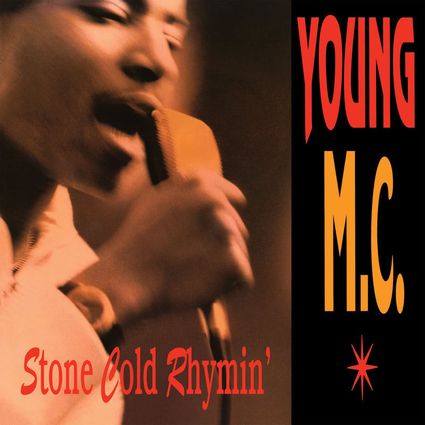Ah, the golden days! Remember when classrooms echoed with whispers and the stealthy rustling of paper? Those moments of sliding a note under the desk or between books? The biggest adrenaline rush wasn’t from exams; it was the thrill of wondering if that handwritten message would make its journey safely. Would the teacher snatch it up mid-pass, delivering that all-too-familiar glare? Maybe it’d fall into the hands of a curious classmate, their eyes scanning your secret words. Or perhaps, just maybe, it’d reach its destination, only for the recipient to rip it apart, leaving the mystery intact. Ah, the simple yet exhilarating challenges of old-school communication!
1989, the line “Passing notes was my favorite pastime” from the song “Principal’s Office” by Young MC. is about the narrator’s experiences in high school, Channeling the essence of high school memories, the track reminisces about the adventures of note-passing, forging friendships, and those first flutters of love. With lyrics like “Passing notes was my favorite pastime,” the song captures the thrill and covert charm of sneaking messages to classmates.
The song’s lyrical brilliance shines with lines like “Passing notes was my favorite pastime,” perfectly encapsulating the excitement and secrecy associated with sneaking messages across classrooms, whether to a crush or a close friend. Through this anthem, evoking memories of love, friendship, and those covert classroom communications – it’s an anthem that transports us back to our formative years, capturing the exhilaration, the awkward dances, and the heartwarming nostalgia of growing up.
The line “Passing notes was my favorite pastime” isn’t merely a lyric; it’s a nod to a simpler, more innocent era when our biggest concern was scribbling messages and sneaking them to friends. Contrast this with today’s digital age, where rapid-fire clicks and instantaneous shares often create barriers rather than bridges. This August, let’s champion a throwback movement. Let’s inspire our young ones to embrace the lost art of note-passing, a genuine exercise that not only stirs emotions but also hones their writing prowess.
It isn’t just a melody from yesteryears; it serves as a timeless bridge between two vastly different eras. The purity encapsulated by the act of passing notes, a subtle mix of excitement and apprehension, is something many of us recall fondly. The very act was intimate, personal, and required a certain bravery to execute. It was about taking a risk, being vulnerable, and hoping your message would find its intended recipient, unfiltered and untouched.
Contrast this beautiful simplicity with the digital age’s complex web. While technology has undoubtedly brought us closer in many ways, it has also erected screens and keyboards that act as barriers. The tactile joy of writing and receiving handwritten notes has been overshadowed by the convenience of instant messaging. In an era of abbreviations, emoticons, and a 280-character limit, have we lost touch with the deeper, more profound joy of expressing and connecting?
This August, as the new school year beckons, we propose an educational experiment: a return to note-passing. It’s not just a nostalgic nod to the past but an opportunity to reclaim the lost art of handwriting and thoughtful communication.
To educators and school administrators, we appeal for a touch of leniency. Let’s not view this as a distraction, but rather as a unique blend of communication studies and creative writing in action. It’s a chance for students to practice penmanship, refine their language skills, and forge connections in the most personal way possible.
Imagine a world where the next generation understands the value of patience, the thrill of anticipation, and the unparalleled joy of receiving a handwritten note. This is our call to action — to recognize, respect, and revive a tradition that’s at risk of fading away. Let’s embrace the power of the written word, and celebrate its potential to foster genuine, heartfelt connections. – Perhaps, a student might pen down lines from a poem they recently studied or sketch a delicate image that encapsulates their emotions. This, in its purest form, is heartfelt communication and showcases their academic prowess, I truly hope so.
In a world ruled by instant messaging and emoji-laden conversations, the nostalgic act of passing handwritten notes might seem like a relic of the past. But as we thumb through history and today’s digital dialogue, we notice distinct nuances that each mode of communication offers. Let’s travel down memory lane and weigh the charm of passing notes against the efficiency of sending texts.
**Tangible Memories**: Handwritten notes are physical memories. Years later, stumbling upon an old note can transport you back to a specific time, place, and emotion.
**Personal Touch**: The unique handwriting, the choice of paper, and even the occasional doodle made each note a personalized piece of art.
**The Thrill of the Exchange**: There was an undeniable excitement in crafting a note, folding it discreetly, and then waiting for the opportune moment to slip it to its intended recipient without getting caught.
**Immediate Responses**: The most significant advantage of texts is the immediacy. No waiting; just type, hit send, and await the reply, which often comes within seconds.
**Multimedia Conversations**: Texting isn’t just about words. We can send photos, GIFs, videos, and voice messages, making conversations richer and more dynamic.
**Group Chats**: Unlike the one-to-one nature of note-passing, texting allows for group conversations where multiple friends can chime in simultaneously.
**Notes**: Handwritten notes carried raw emotions. The effort of writing, coupled with the inherent risk of passing notes (especially in a classroom setting), made them feel special.
**Texts**: While texts can sometimes feel impersonal, the use of emojis, stickers, and gifs can convey emotions, albeit in a more standardized manner.
**Notes**: Once passed, a note became vulnerable. It could be intercepted, read by unintended eyes, or even lost. However, once discarded or safely stored away, its digital footprint was non-existent.
**Texts**: Texts offer privacy through end-to-end encryption on many platforms. However, they also leave a digital trail. Data breaches or unintentional backups can sometimes make our ‘deleted’ messages resurface.
While some argue that texting has eroded the beauty of personal communication, others appreciate its convenience and adaptability. It’s essential to remember that every form of communication reflects the zeitgeist of its era. Handwritten notes mirrored a time of patience and anticipation, while texting mirrors today’s fast-paced, interconnected world.
Whether you’re a fan of scribbling notes on folded paper or sending a quick text, both forms of communication have their charm and significance. The key is to find a balance and use each medium to enhance our relationships, ensuring the essence of our messages isn’t lost in translation.

Lorem ipsum dolor sit amet, conse ctetur adipisicing elit, sed do eiusmod tempor incididunt ut...
Lorem ipsum dolor sit amet, conse ctetur adipisicing elit, sed do eiusmod tempor incididunt ut...
Lorem ipsum dolor sit amet, conse ctetur adipisicing elit, sed do eiusmod tempor incididunt ut...
Lorem ipsum dolor sit amet, conse ctetur adipisicing elit, sed do eiusmod tempor incididunt ut...

Simply the best backpack for all around use, many compartments to store things and washable.